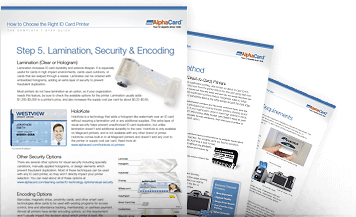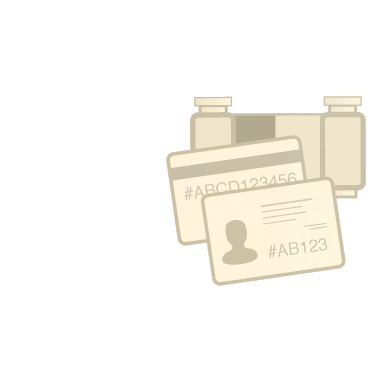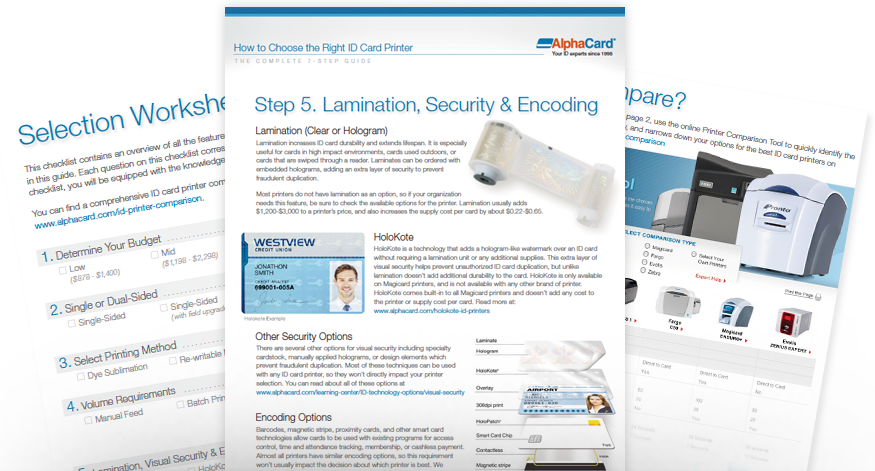Dye Sublimation (Direct-to-Card) Printers
Most ID card printers use dye sublimation printing, also known as direct-to-card (DTC). These types of printers infuse the color from the printer ribbon into the card using heat from the printhead. When the cards come out they are never wet and do not smear like they can from ink jet or laser printers. Dye sublimation printers feature marginless edge-to-edge printing, but sometimes leave a tiny white border around the card edge. Dye sublimation printers are the most common type, and are more affordable that reverse transfer printers starting at just $878. If you organization doesn’t need high definition cards, doesn’t mind a tiny white border, and doesn’t need to print on specialty format cardstock, then this type of printer is your best option.
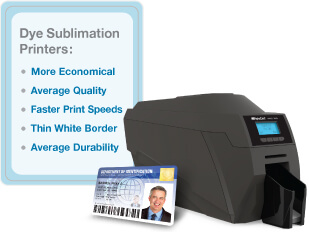 Rewritable Printing Mode
Rewritable Printing Mode
In addition to their standard printing mode, some dye sublimation printers have a monochrome rewritable mode which can print on special rewritable cards without using any additional supplies. Rewritable cards are thermo-sensitive,and can be printed, erased, and re-printed up to 500 times. This type of printing is best for text and simple graphics since it will only print monochrome blue or black without any gradients or shades. Organizations that print temporary badges can save resources and money by using this economical printing method.
Not all dye sublimation printers have a rewritable printing mode, so be sure to check the printer specs if this is a feature your organization needs.
Reverse Transfer Printers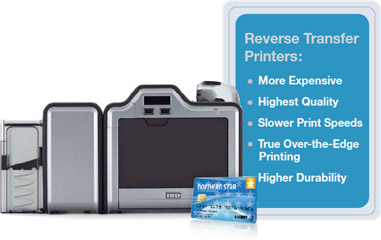
Reverse transfer printing (also known as retransfer printing) is a higher-end printing technology that produces crisper, high definition resolution, and true over-the-edge printing without any white borders. Reverse transfer printers use both a printer ribbon as well as transfer film to print. The card image is first printed onto the film, and then the film is fused over the entire surface of the card. Because the printhead never touches the card, it is ideal for specialty format cards that could damage the printhead on a dye sublimation printer, such as technology cards. The reverse transfer film also adds an extra layer of durability and protection that isn’t present on cards printed with dye sublimation printing.
Reverse transfer printers are more expensive than dye sublimation printers, starting at about $2,800. If your organization requires higher quality prints, true borderless printing, extra durability or printing on specialty cards, this may be your best option.


